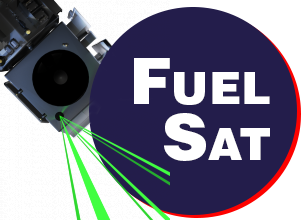FUEL-SAT PROJECT
TASKS
Task 1 — Field Sampling Design
Three main steps:
- Select the most recent ICESat-2 ground track
- Select ~100 ICESat-2 segments (100m x 17 m)
- Select ~100 field plots outside of the ICESat-2 data
Coordination: Nuno Guiomar, (support from Susana Barreiro and Sérgio Godinho
Duration: 3 Months (end of June 2021)
Task 2 — Field data collection and processing
Three main steps:
- Prepare a field manual, provide crew training and perform data collection.
- Perform quality control of the field data.
- Create a database with the field measurements and estimates of the key crown and
understory variables.
Coordination: Susana Barreiro, (support from Brigite Botequim, Sérgio Godinho, Nuno Guiomar)
Duration: 27 Months (April 2021 to June 2023) (includes two field campaigns of 3 months each)
Task 3 — Airborne data collection and processing
Three main steps:
- Collect ALS data.
- Process ALS data.
- Compute CC and vegetation mask from ALS RGB and NIR channels .
Coordination: Juan Guerra, (support from Susana Barreiro and Sérgio Godinho
Duration: 4 Months (July to October 2021)
• Define the flight characteristics (this is key!)
• Co-registration between ALS and field data using GPS
Task 4 — Relationship between ALS and field data
Build predictive models based for each vegetation metric using as predictors the on ALS
metrics
Coordination: Sérgio Godinho & Juan Guerra
Duration: 6 Months (November 2021 to April 2022)
Task 5 — Assessing the potential of ICESat-2 data
Three main steps:
- Estimate the key fuel related variables derived with ALS data using the coincident ICESat-2 data.
- Provide a quantitative assessment of the accuracy of CH retrievals as compared to coincident ALS estimates.
- Analyze how its performance is affected by different factors.
Coordination: Sérgio Godinho, Juan Guerra ( support from Akli Benali)
Duration: 6 Months (May 2022 to October 2022)
Task 6 — Wall to wall fuel related variables mapping
Three main steps:
- Build a multi sensor dataset (S1, S2, PALSAR, SRTM).
- Estimate the key fuel related variables for the entire study region.
- Validate the wall to wall estimates of the key fuel variables.
Coordination: Sérgio Godinho (support from Akli Benali)
Duration: 10 Months (November 2022 to August 2023)
Task 7 — Assessing the impact of satellite derived canopy and surface fuel data on fuel management
Three main steps:
- Identify the major disagreements in the estimates of the key fuel variables using two different sources of data: satellite derived (Task 6) and reference maps.
- Identify future improvements on the fuel model assignment that fully exploit the integration of the satellite derived fuel estimates.
- Evaluate how the location for priority fuel treatments is affected by changes in the key fuel
related variables using the two different sources of data.
Coordination: Akli Benali (support from Paulo Fernandes and Carlos Rossa)
Duration: 10 Months (June 2023 to March 2024)
